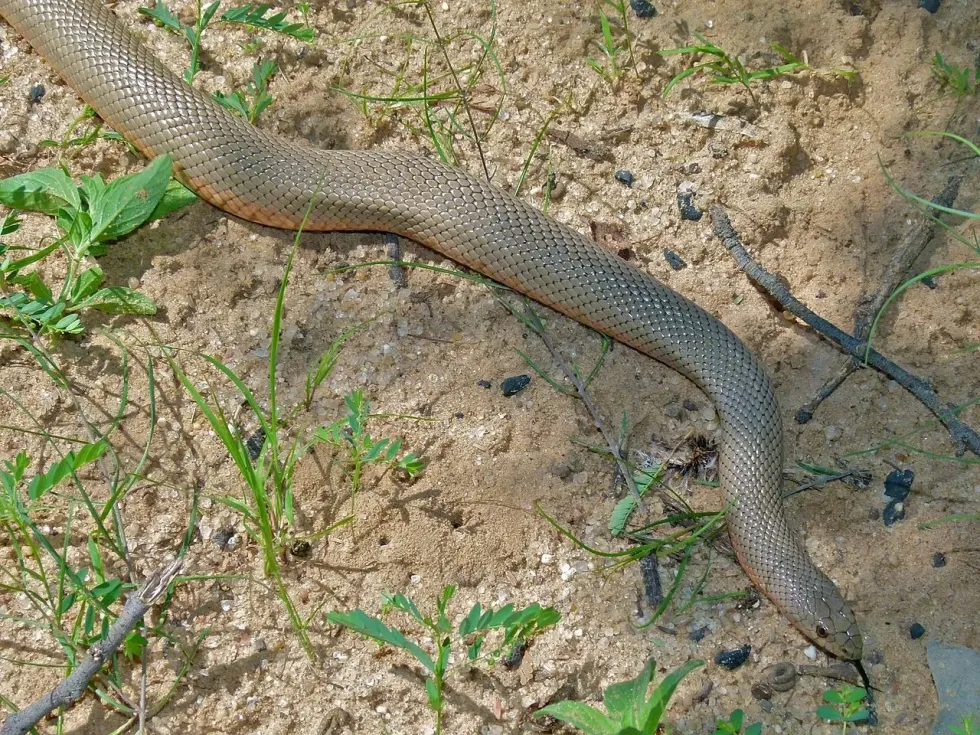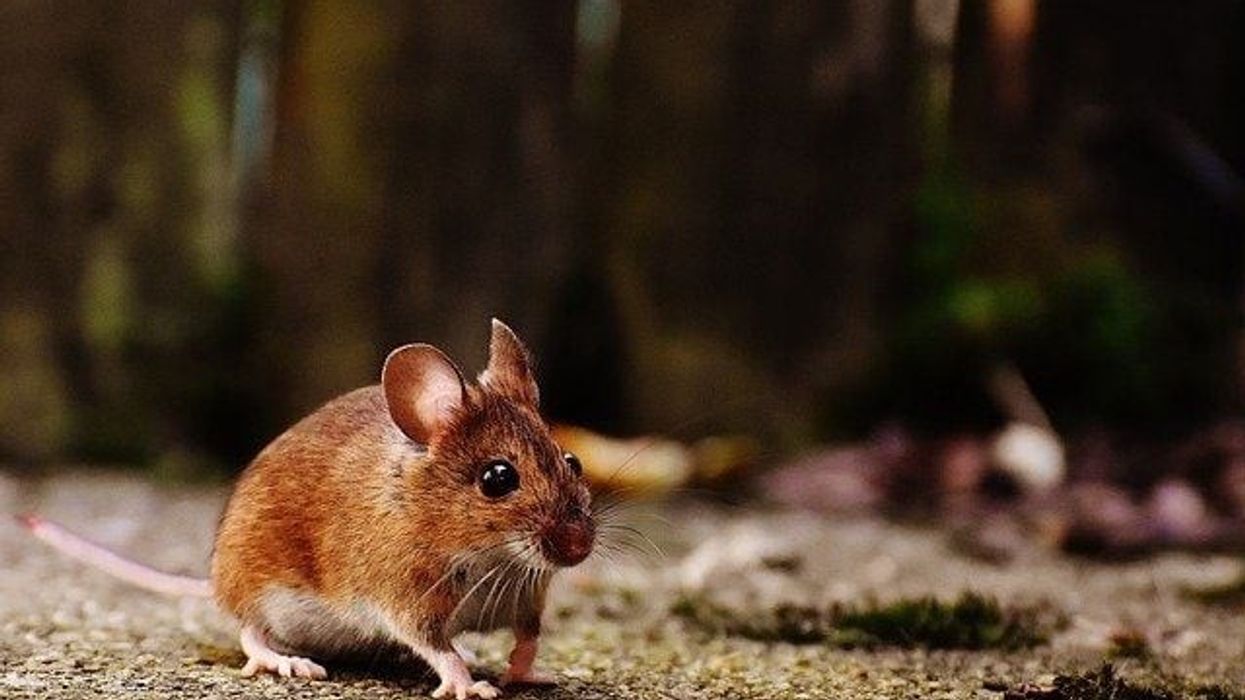A Pseudaspis cana or a mole snake is a muscular snake species of the Pseudaspididae family that is the monotype of the genus Pseudaspis. Mole snakes are found in abundance throughout most of South Africa.
The distribution of the species of P. cana (mole snakes) also extends to some protected areas and national parks of South Africa like the Kalahari Gemsbok National Park. However, recent developments and deforestation have snatched a major part of their habitat.
As a result, although they are not threatened currently, they have still been recognized by wildlife protection sites. The P. cana is encountered commonly in sandy areas.
This snake is found in underground burrows in large numbers.
Sometimes they also inhabit empty rodent burrows and any other burrow where the availability of moles is abundant. Their physical adaptations help them to glide through the underground soil easily.
The honey badger is a famous predator of mole snakes and its traces have been found in the feces of the animal. Keep on reading these amazing facts to know more about these Pseudaspis specimens of Africa.
For similar content check out Burmese python facts and eastern diamondback rattlesnake facts too.
Mole Snake Interesting Facts
What type of animal is a mole snake?
Pseudaspis cana (mole snake) is a type of nonvenomous snake.
What class of animal does a mole snake belong to?
Mole snakes of the Squamata order belong to the class Reptilia, the common class consisting of all reptiles of the world.
How many mole snakes are there in the world?
The distribution of mole snakes is common throughout their range in Africa. The abundant visibility of snake specimens in South Africa indicates that the mole snake population has been stable throughout its range. However, the total population of the mole snake species has not been determined.
Where does a mole snake live?
Mole snakes inhabit the entire range of forests in the Southern parts of Africa. Their distribution widely stretches from Angola in the north to the southern tip of Cape Town in the South.
Some other South African countries that are included in the range of this species are Zambia, Botswana, Namibia, Zimbabwe, Tanzania, Mozambique, Burundi, Malawi, and Zaire. The easternmost range for this snake extends to Kenya. Some snakes might also be found in captivity.
What is a mole snake's habitat?
Mole snakes can easily adapt to a large range of habitats. This specimen is found inhabiting the scrublands and grasslands in the Cape Town region as well as in the Highveld Plateau. Apart from that, they can also occur in arid deserts and even mountain ranges.
Who do mole snakes live with?
Snakes are generally solitary animals. Mole snakes live inside the burrows of their prey. They live in solitude except during the mating season. Other than that they might become aggressive at the sight of any intruder.
How long does a mole snake live?
The captive lifespan of Pseudaspis cana, mole snakes, differs widely from the lifespan of the species in the wild. In the wild, they can live around eight years of age while in captivity, they have been recorded to live for 20 years.
How do they reproduce?
The P. cana species of snake follow viviparous reproduction, that is the embryo of the juveniles develops within the adult body. The peak mating season of this snake is the end of the spring season in October.
The female gives birth to a litter of 25-50 juveniles. However, a maximum of 95 young individuals has been recorded in this species. In a captive experiment, it was noticed that the gestation period lasts for 180 days approximately.
What is their conservation status?
The conservation status of the species of Pseudaspis cana or the mole snakes has not been determined. They are Not Listed in the IUCN Red List. The distribution of this snake is fairly common throughout other African countries.
Mole Snake Fun Facts
What do mole snakes look like?

The mole snake is sleek and slender but still a muscular species with a tubular body. Their head is small and ends in an elongated and pointed snout in the front. The body of adult mole snakes is monocolored. Their body color varies between gray, yellow, black, and brown.
The juvenile mole snake has bright-colored markings. The young show various shades of brown with pattern markings of black or brown spots and bands. The males and females do not show much sexual dimorphism.
How cute are they?
The appearance of mole snakes matches the description of any other normal snake. This snake has no unique feature that makes its appearance extraordinary and the measure of its cuteness is subjective to different individuals.
How do they communicate?
Snakes mainly communicate by secreting chemical substances. They do not have ears so they communicate by analyzing vibrations and scents.
How big is a mole snake?
The average length of mole snakes is 6.6 ft (2 m). They are more or less longer than the mole king snake.
How fast can a mole snake move?
The speed of these sluggish snakes has not been quantified yet.
How much does a mole snake weigh?
In captivity, it was measured that a mole snake weighed around 7 oz (200 g).
What are the male and female names of the species?
The males and females do not have any specific names. They are called mole snakes.
What would you call a baby mole snake?
The baby of a snake is called a snakelet.
What do they eat?
Moles are the primary food of the snake. Apart from that they also feed on small mammals, rodents, lizards, and eggs of birds. The young ones feed on stream frogs.
Are they venomous?
No, this snake does not possess venom however due to their sharp teeth, a mole snake bite can be very painful. These snake bites might even require stitches to repair.
Would they make a good pet?
This snake is quite a ferocious one. Although they do not possess any poison, their bites can cause severe pain. When they bite, they move their head up and down for a stronger grip of their knife-like teeth that creates deep wounds. However, many individuals are found in captivity under professionals.
Did you know...
When mole snakes shed their skin, they loosen the skin around their head first, at the beginning of molting.
Why are they called mole snakes?
Moles form the primary food source of the species Pseudaspis cana. The snake gets its name based on its primary diet and therefore is referred to as the mole snake.
What's the difference between a mole snake and a mole king snake?
The mole and the mole king snake are both nonvenomous snakes that spend their day mostly in underground burrows. However, the former one is generally much longer in size than the mole king snake.
They are also found to occur in different regions of the world. The mole snake specimens inhabit the countries of South Africa while the mole king snakes are distributed throughout the Mid-Atlantic States.
Here at Kidadl, we have carefully created lots of interesting family-friendly animal facts for everyone to discover! Learn more about some other reptiles including Timber rattlesnake facts, or cat snake facts.
You can even occupy yourself at home by coloring in one of our free printable mole snake coloring pages.










